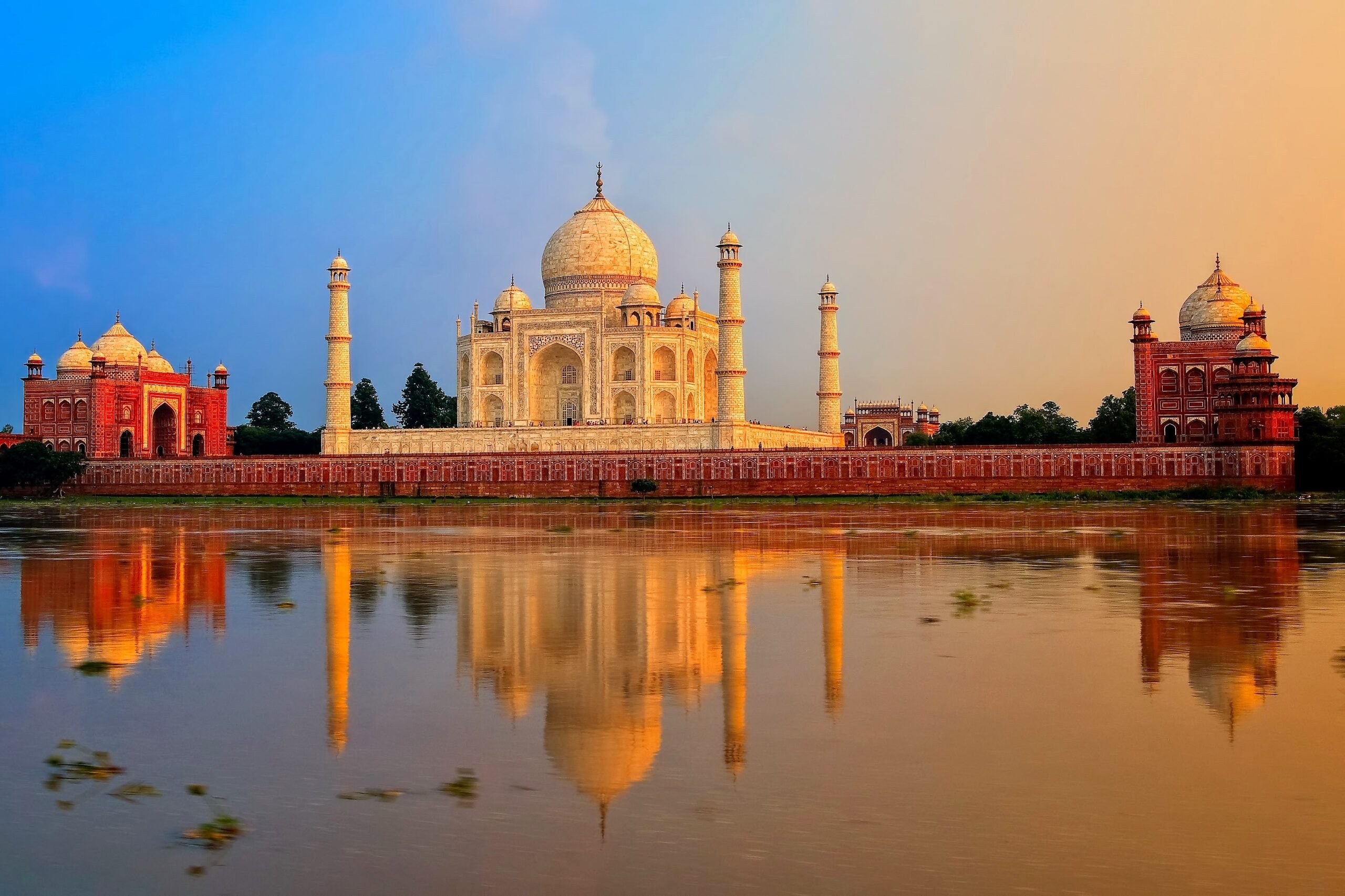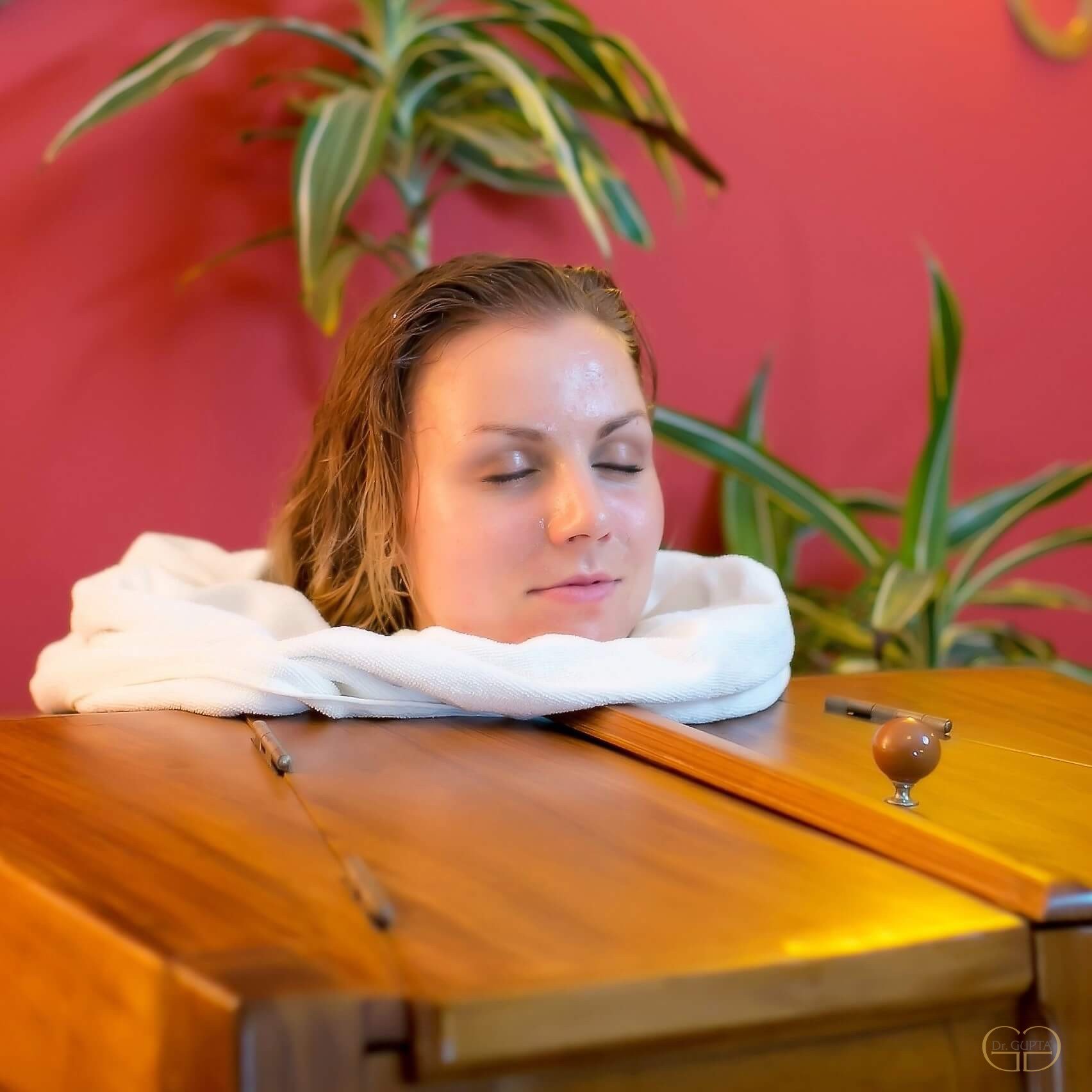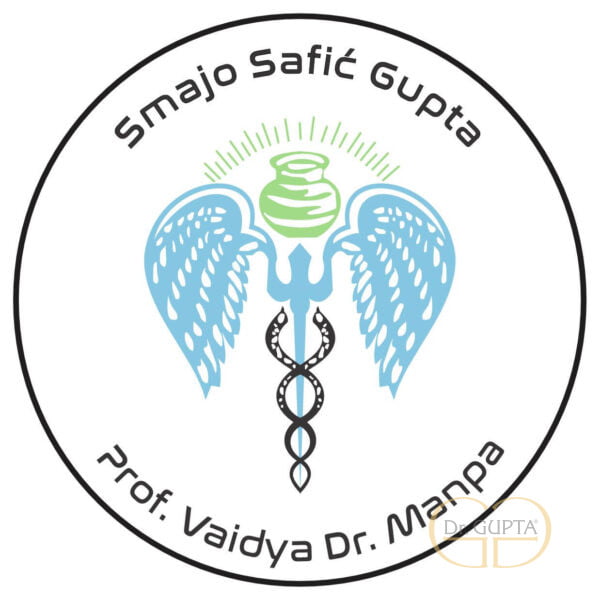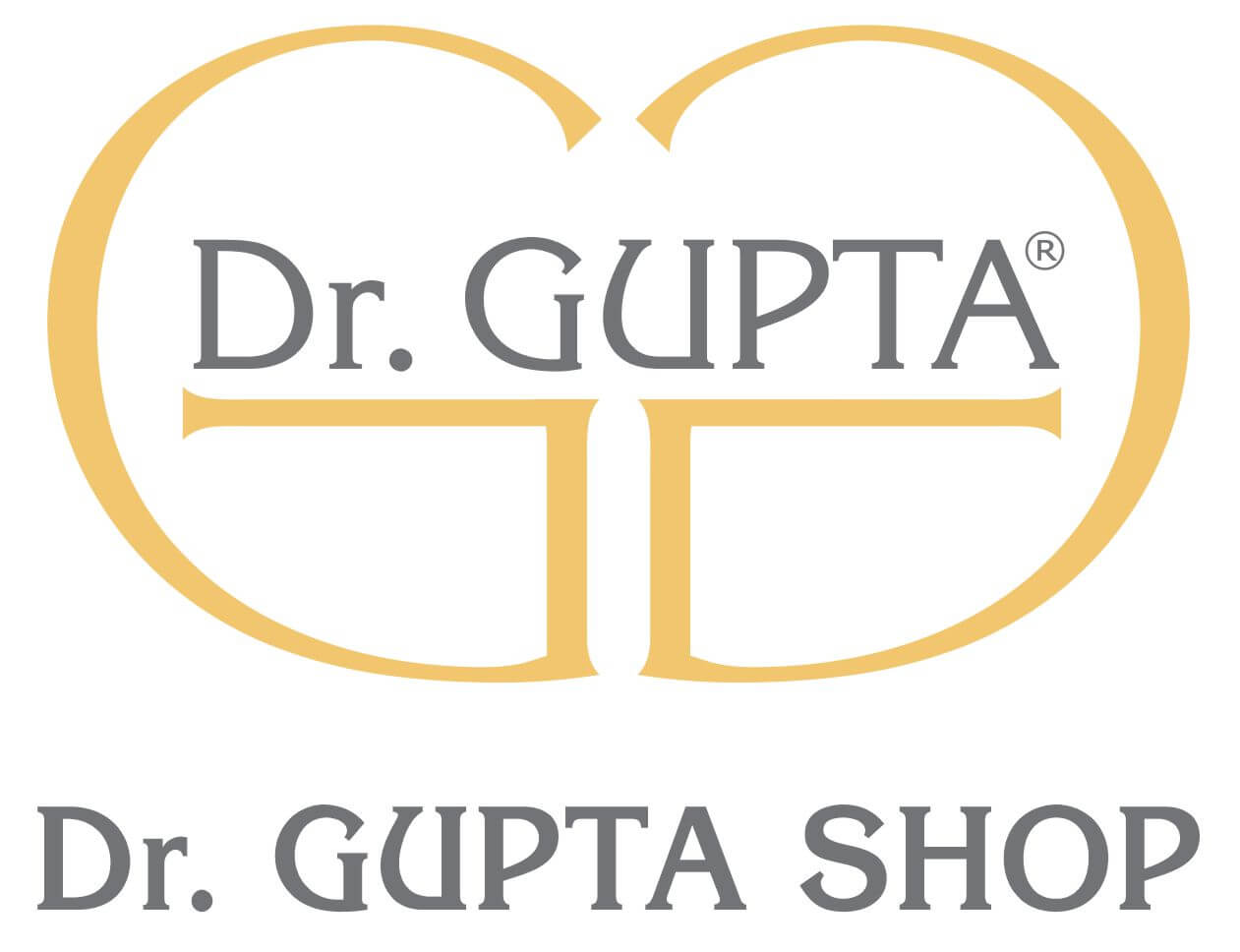Welcome to the land of “God Dhanvantari Ayurveda” – India, which was known in the Vedic tradition for the Lord Vishnu of Ayurvedic medicine. Tibetan and Chinese medicine both have their roots in Ayurveda. Early Greek medicine (Hippocratic medicine) also embraced many concepts originally described in the classical ayurvedic medical texts. The Indian program welcomes members of your family, friends and members of various associations, too. During your stay you will receive ayurvedic Panchakarma treatments as well as having the chance to visit some touristic sights in India alongside the medical tourism program. Ayurvedic treatments will be performed for at least 7 days (preventive) or more than 7, 14 and up to 21 days (curative), all depending on the condition and disease of body fluids of the client’s Dosha. Programs / processes are adapted to individuals according to their climate and culture. In the implementation of the programs, we will not use procedures, which could interfere with the basic right to personal dignity and the inviolability of the physical or mental integrity. The achievements of Ayurvedic pharmacy have in many ways been confirmed by modern biology and medicine. Medications, as well as therapeutic products, are based on a medical system that goes back thousands of years, giving it all the additional value, quality, originality and safety. During the therapeutic program, the patient is fully allowed to undergo the treatment recommended by his personal physician or a specialist in Western medicine. Ayurvedic therapeutic listed processes that will be selected in consultation individually with Doctor of Ayurveda medicine or Vaidya – number of ayurvedic processes within depends on demand or physical state of the client-patient (Vikruti).
The manual ayurvedic process will be performed synchronously by two Ayurvedic masseurs – therapists. The complementary process will be performed by Vaidya. Ayurvedic processes will be performed by various traditional techniques that include rubbing and massaging all over the body of medicinal oils and herbs from herbs and other biotic substances, various compresses on the painful place on the body. In the ancient medicine of Ayurveda, it is believed that each of us has a memory of our own perfection and of a profound feeling of satisfaction and happiness, latent in us, yet asleep and inactive. The heart or the consciousness is the home of a deeply-rooted (Samsara) state of mind, our permanent emotions or the essence of all of our experiences. The Ayurvedic processes require from the individual to perceive a wider perspective to their lives, in other words, to ask ourselves if we actually lead a fulfilling life being supportive of our life´s purpose, which represents a holistic essence or the One spiritual greatness.
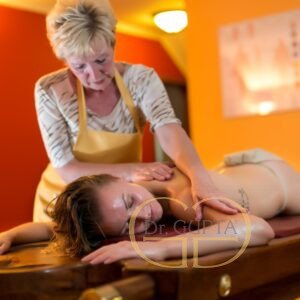 The Abhyanga is an integral part of the daily routine massage of the whole body, which is recommended by an Ayurvedic doctor for general health and good condition of the body. Abhi means in, according to, and Ang which has its root in terms of movement. Abhyanga means that energy is released as toxins in the body move in the direction of the excretory system. A significant role is played by special Ayurvedic herbal oils that are slowly warmed (snehana) and gently rubbed, in order to maintain good health. Oils are selected according to the patient’s physical condition – Prakruti. The massage is extremely relaxing, and has a detoxifying effect, and strengthens and revitalises the whole body, improves lymph flow and stimulates the immune system, which provides new body energy, calms and strengthens the nervous system. Abhyanga & Pourvakarma is a process in which only medicinal oils and other natural substances are used. These processes release energy in the body, excrete toxins (vitalizes the whole body). Abhyanga processes bring new psychic energy, calm the nervous system and strengthen immunity.
The Abhyanga is an integral part of the daily routine massage of the whole body, which is recommended by an Ayurvedic doctor for general health and good condition of the body. Abhi means in, according to, and Ang which has its root in terms of movement. Abhyanga means that energy is released as toxins in the body move in the direction of the excretory system. A significant role is played by special Ayurvedic herbal oils that are slowly warmed (snehana) and gently rubbed, in order to maintain good health. Oils are selected according to the patient’s physical condition – Prakruti. The massage is extremely relaxing, and has a detoxifying effect, and strengthens and revitalises the whole body, improves lymph flow and stimulates the immune system, which provides new body energy, calms and strengthens the nervous system. Abhyanga & Pourvakarma is a process in which only medicinal oils and other natural substances are used. These processes release energy in the body, excrete toxins (vitalizes the whole body). Abhyanga processes bring new psychic energy, calm the nervous system and strengthen immunity.
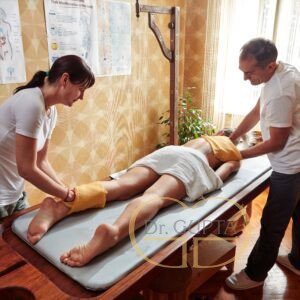 The Garshana is an ideal massage for people who have frequent disorders of dosha Kapha. The process is performed with special gloves made of raw silk. For better efficiency, the process ends with warm oil (Snehana), and in some cases, Swedana (Herbal steam bath-sauna) is added, for even more successful cell detoxification. The procedure improves blood circulation, the supply of oxygen compounds to the cells, promotes the removal of accumulated toxins, promotes weight loss and opens clogged lymphatics, which cause problems such as cellulite and the like. Along with the Garshana process, welcome the Nadiswedan is a unique form of Swedan procedure where sweating is induced by passing steam over the body part by using a special instrument known as Nadi Sweda Yantra. The steam is passed through a rubber tube fitted to the instrument and it is an easy method of applying heat to a localized part of a body. Some special oil is also applied (massaged) to the body part depending on the individual need before passing steam to that part ss the procedure of Nadi Swedan. This benefits process: Relieves pain; Relieves oedema; Brings softness to the body; Reduces the stiffness of the joints and keeps them mobile; Improves the process of blood circulation; It helps in removing the mala of the body and It removes muscular stiffness. Indications: Osteo arthritis, Paralysis, Polio myelitis, all Vata related disorders, Asthma, Cough, Facial paralysis, Sciatica, Spondylitis and Back ache.
The Garshana is an ideal massage for people who have frequent disorders of dosha Kapha. The process is performed with special gloves made of raw silk. For better efficiency, the process ends with warm oil (Snehana), and in some cases, Swedana (Herbal steam bath-sauna) is added, for even more successful cell detoxification. The procedure improves blood circulation, the supply of oxygen compounds to the cells, promotes the removal of accumulated toxins, promotes weight loss and opens clogged lymphatics, which cause problems such as cellulite and the like. Along with the Garshana process, welcome the Nadiswedan is a unique form of Swedan procedure where sweating is induced by passing steam over the body part by using a special instrument known as Nadi Sweda Yantra. The steam is passed through a rubber tube fitted to the instrument and it is an easy method of applying heat to a localized part of a body. Some special oil is also applied (massaged) to the body part depending on the individual need before passing steam to that part ss the procedure of Nadi Swedan. This benefits process: Relieves pain; Relieves oedema; Brings softness to the body; Reduces the stiffness of the joints and keeps them mobile; Improves the process of blood circulation; It helps in removing the mala of the body and It removes muscular stiffness. Indications: Osteo arthritis, Paralysis, Polio myelitis, all Vata related disorders, Asthma, Cough, Facial paralysis, Sciatica, Spondylitis and Back ache.
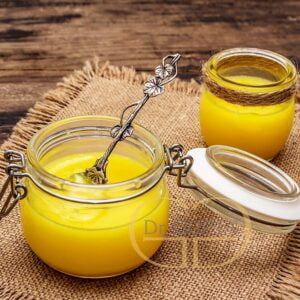 The Ghee is an “royal” process that is of great importance for the radiance and beauty of the skin (Kanti), for strengthening the intellect, promotes longevity, has aphrodisiac properties and protects the body from various diseases. The process works specifically on rejuvenating the Ojas (boosts vital juices). The Katipichu a warm oil therapy, helps you deal with lower back conditions like lumber spondylosis, inter-vertebral disc prolapses, lumbago (low back ache), and sciatica. A long, thick layer of cotton is soaked in warm medicated oil and applied over the affected area and the oil is replaced periodically to keep it warm. The Dhoopana (fumigation) in this treatment medicated smoke from different drugs relevant to the disease is inhaled. This is especially in psychosomatic diseases etc. This is also done on different parts of the skin for certain diseases or to heal the wounds. This process used as a means of drug administration in disease conditions like wounds, poisoning ENT diseases, gynecologically and psychological disorders. The Shukra explains two pathological conditions, namely Shukrakshaya (deficiency in sperm) and Shukradushti (defect in sperm). Both of them it may cause male unhealth’s sexual dysfunction. Vihara (Lifestyle factors) talk to an Ayurvedic doctor about Anxiety, Sadness, Suspicion, Fear and Anger. Therapeutic process includes Snehana, Swedana and main process Basti (medicated oil or ghee used) in the genital (urethral opening and anus) tract helps to restore normal sexual functions.
The Ghee is an “royal” process that is of great importance for the radiance and beauty of the skin (Kanti), for strengthening the intellect, promotes longevity, has aphrodisiac properties and protects the body from various diseases. The process works specifically on rejuvenating the Ojas (boosts vital juices). The Katipichu a warm oil therapy, helps you deal with lower back conditions like lumber spondylosis, inter-vertebral disc prolapses, lumbago (low back ache), and sciatica. A long, thick layer of cotton is soaked in warm medicated oil and applied over the affected area and the oil is replaced periodically to keep it warm. The Dhoopana (fumigation) in this treatment medicated smoke from different drugs relevant to the disease is inhaled. This is especially in psychosomatic diseases etc. This is also done on different parts of the skin for certain diseases or to heal the wounds. This process used as a means of drug administration in disease conditions like wounds, poisoning ENT diseases, gynecologically and psychological disorders. The Shukra explains two pathological conditions, namely Shukrakshaya (deficiency in sperm) and Shukradushti (defect in sperm). Both of them it may cause male unhealth’s sexual dysfunction. Vihara (Lifestyle factors) talk to an Ayurvedic doctor about Anxiety, Sadness, Suspicion, Fear and Anger. Therapeutic process includes Snehana, Swedana and main process Basti (medicated oil or ghee used) in the genital (urethral opening and anus) tract helps to restore normal sexual functions.
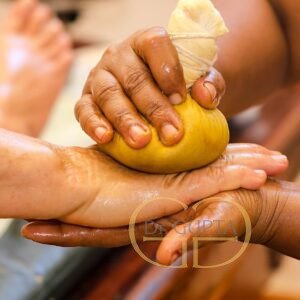 The Hastabhyanga is a process that balances diseases in the hands, shoulder area and other joints in the upper extremities (balances blood circulation in the upper limbs). The results of the process are rested and light hands and reduced fatigue. During the process, the level of stress and tension is reduced and flexibility in the joints is restored. It especially helps people who suffer from arthritis and rheumatism. Also, the process helps people who have heart problems and difficulty breathing (a feeling of excitement). The Utsadanam is an ayurvedic treatment that involves massaging the body with medicinal paste. In Utsadana, the powders of medicinal drugs are combined with ghee or oil to make a paste. This paste is then rubbed over your body in a reverse or upward direction over the body. Benefits of process offers a wide range of benefits, including: Helps in losing weight; Improved skin health; Nourishes the skin, enhances its texture, and promotes a healthy glow; It helps in reducing pigmentation, blemishes, and signs of aging. The Abhyanthara Snehapana or Internal oleation is a practice in which a specific amount of Ghee (fat) is ingested in a gradually increasing dose for a particular duration of time. In fact, studies have claimed that Snehapana actually caused significant weight loss and reduction in Blood Lipid Levels. Signs of proper snehapana: Expulsion of gas from the bowels; Improved appetite; Fatty stools; Laxity of the limbs; and Oiliness of the body and skin.
The Hastabhyanga is a process that balances diseases in the hands, shoulder area and other joints in the upper extremities (balances blood circulation in the upper limbs). The results of the process are rested and light hands and reduced fatigue. During the process, the level of stress and tension is reduced and flexibility in the joints is restored. It especially helps people who suffer from arthritis and rheumatism. Also, the process helps people who have heart problems and difficulty breathing (a feeling of excitement). The Utsadanam is an ayurvedic treatment that involves massaging the body with medicinal paste. In Utsadana, the powders of medicinal drugs are combined with ghee or oil to make a paste. This paste is then rubbed over your body in a reverse or upward direction over the body. Benefits of process offers a wide range of benefits, including: Helps in losing weight; Improved skin health; Nourishes the skin, enhances its texture, and promotes a healthy glow; It helps in reducing pigmentation, blemishes, and signs of aging. The Abhyanthara Snehapana or Internal oleation is a practice in which a specific amount of Ghee (fat) is ingested in a gradually increasing dose for a particular duration of time. In fact, studies have claimed that Snehapana actually caused significant weight loss and reduction in Blood Lipid Levels. Signs of proper snehapana: Expulsion of gas from the bowels; Improved appetite; Fatty stools; Laxity of the limbs; and Oiliness of the body and skin.
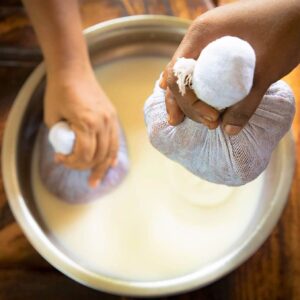 The Njavarakizhi is a distinct Ayurvedic massage using Njavara (Shashtika Shali) or cooked medicinal rice mixed with milk and herbal extract of Kurumthotti tied in cotton boluses called as kizhis. The Kizhis dipped in medicated oils will be applied all over the body or a specific part of the body to induce sudation (perspiration). The procedure is intended for people with Rheumatism, Arthritis, and Pain in muscles and Joints. The mixture of plant leaves is prepared in accordance with the symptoms and problems of the client. This benefits process: Neurological and vertebral diseases; Boosts immunity and Improves digestion; Helps mind and body relax; Relieves stress, Anxiety and Fatigue. The Lepa bandage & Dashanga Lepam is the local application of herbal paste. Lepam absorbs the swelling and inflammation from the affected part trans dermally. Herbs chosen according to the condition are powdered, made into a paste by mixing with a suitable medium like decoction, water or egg white and applied over the affected part. Dashanga Lepa is prepared with ten ingredients hence the name Dasanga (meaning ten). This formulation is indicated in common are skin conditions, as well as in beauty therapy. The therapy where warm paste is applied (after an oil application) over the affected area, and the paste is then covered with Vatahara leaves such as Nirgundi and Eranda Patra (Castor oil leaves), followed by a bandage. The area is then bandaged and left for about 25 minutes before it is removed.
The Njavarakizhi is a distinct Ayurvedic massage using Njavara (Shashtika Shali) or cooked medicinal rice mixed with milk and herbal extract of Kurumthotti tied in cotton boluses called as kizhis. The Kizhis dipped in medicated oils will be applied all over the body or a specific part of the body to induce sudation (perspiration). The procedure is intended for people with Rheumatism, Arthritis, and Pain in muscles and Joints. The mixture of plant leaves is prepared in accordance with the symptoms and problems of the client. This benefits process: Neurological and vertebral diseases; Boosts immunity and Improves digestion; Helps mind and body relax; Relieves stress, Anxiety and Fatigue. The Lepa bandage & Dashanga Lepam is the local application of herbal paste. Lepam absorbs the swelling and inflammation from the affected part trans dermally. Herbs chosen according to the condition are powdered, made into a paste by mixing with a suitable medium like decoction, water or egg white and applied over the affected part. Dashanga Lepa is prepared with ten ingredients hence the name Dasanga (meaning ten). This formulation is indicated in common are skin conditions, as well as in beauty therapy. The therapy where warm paste is applied (after an oil application) over the affected area, and the paste is then covered with Vatahara leaves such as Nirgundi and Eranda Patra (Castor oil leaves), followed by a bandage. The area is then bandaged and left for about 25 minutes before it is removed.
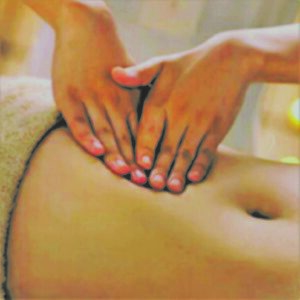 The Namimarmacikic is a process, intended for the digestive system, which simultaneously releases cramps in the abdominal cavity. It additionally has a good effect on the problem of the state of Vata dosha – such as constipation, kidney stones, vomiting, abdominal pain due to gas, spleen disorders, gout and acids and alkalis in the body. The process is extremely effective for men who have prostate problems and women with hormonal problems, premenstrual syndrome and menstrual disorders. The Virachana therapy is defined as the medicated purgation therapy, which cleanses the Pitta and purifies blood, by clearing the toxins from the body. The treatment concentrates on the toxins that are accumulated in the liver and gall bladder. The gastro-intestinal tract is also cleansed by therapy. While performing the Virechana, the vitiated doshas are eliminated through the rectum. This process is relives headaches, anaemia, pain in the large intestine (non-healing wounds). The eliminates toxin accumulation in the GI tract; Effective treatment for piles, constipation, acidity, ulcers, liver/ spleen diseases, jaundice, inflammations; Cures mild and chronic skin disorders; Helps manage diabetes, asthma and heart diseases; and Reduces gynecological disorders. The internal olation is followed for three to seven days. Thereafter, a Herbal medicated steam bath is performed for three days. A light and warm diet is prescribed for the patient, a day before starting Virechana.
The Namimarmacikic is a process, intended for the digestive system, which simultaneously releases cramps in the abdominal cavity. It additionally has a good effect on the problem of the state of Vata dosha – such as constipation, kidney stones, vomiting, abdominal pain due to gas, spleen disorders, gout and acids and alkalis in the body. The process is extremely effective for men who have prostate problems and women with hormonal problems, premenstrual syndrome and menstrual disorders. The Virachana therapy is defined as the medicated purgation therapy, which cleanses the Pitta and purifies blood, by clearing the toxins from the body. The treatment concentrates on the toxins that are accumulated in the liver and gall bladder. The gastro-intestinal tract is also cleansed by therapy. While performing the Virechana, the vitiated doshas are eliminated through the rectum. This process is relives headaches, anaemia, pain in the large intestine (non-healing wounds). The eliminates toxin accumulation in the GI tract; Effective treatment for piles, constipation, acidity, ulcers, liver/ spleen diseases, jaundice, inflammations; Cures mild and chronic skin disorders; Helps manage diabetes, asthma and heart diseases; and Reduces gynecological disorders. The internal olation is followed for three to seven days. Thereafter, a Herbal medicated steam bath is performed for three days. A light and warm diet is prescribed for the patient, a day before starting Virechana.
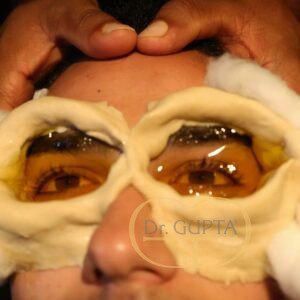 The Netra tharpanam (Akshi tharpanam) is a process of “rejuvenating the eyes” that relaxes tense and tired eyes. The process is carried out with a special healing butter (ghee). Before the Netratarpan process, it is necessary to perform the Mukabhyanga procedure (head / hair, face / neck massage) for better efficiency of the whole process. The therapy provides relaxation eyes. It is process used in conditions such as poor eyesight, dry eyes, glaucoma, eye stress. It cures eye inflammations, tightens wrinkles around them, improves the quality and depth of visual perception, and restores their radiance. The Sarvanga Lepam this nourishing treatment involves the application of a medicated herbal paste to the scalp and hair. This proces enhances blood circulation and reduces hair fall. Pacifies all three Doshas; Reduces fatigue (builds stamina); Increases relaxation; Sound sleep; and Promotes longevity. The Shirolepam (Thalapothichil) is a procedure wherein application of medicated paste over the head is done. The paste is prepared by using some cooling herbs mixed with buttermilk. This is an effective treatment for the psychological disorders. Promotes nerve stimulation; Promotes mental and physical relaxation (sound sleep); Cures dandruff, hair fall, premature graying of hair and hair loss; Effective in hypertension management; Relaxes, rejuvenates and nourishes the head and neck region; Effective in migraine headache; Epilepsy and Neurological disorders (improves memory).
The Netra tharpanam (Akshi tharpanam) is a process of “rejuvenating the eyes” that relaxes tense and tired eyes. The process is carried out with a special healing butter (ghee). Before the Netratarpan process, it is necessary to perform the Mukabhyanga procedure (head / hair, face / neck massage) for better efficiency of the whole process. The therapy provides relaxation eyes. It is process used in conditions such as poor eyesight, dry eyes, glaucoma, eye stress. It cures eye inflammations, tightens wrinkles around them, improves the quality and depth of visual perception, and restores their radiance. The Sarvanga Lepam this nourishing treatment involves the application of a medicated herbal paste to the scalp and hair. This proces enhances blood circulation and reduces hair fall. Pacifies all three Doshas; Reduces fatigue (builds stamina); Increases relaxation; Sound sleep; and Promotes longevity. The Shirolepam (Thalapothichil) is a procedure wherein application of medicated paste over the head is done. The paste is prepared by using some cooling herbs mixed with buttermilk. This is an effective treatment for the psychological disorders. Promotes nerve stimulation; Promotes mental and physical relaxation (sound sleep); Cures dandruff, hair fall, premature graying of hair and hair loss; Effective in hypertension management; Relaxes, rejuvenates and nourishes the head and neck region; Effective in migraine headache; Epilepsy and Neurological disorders (improves memory).
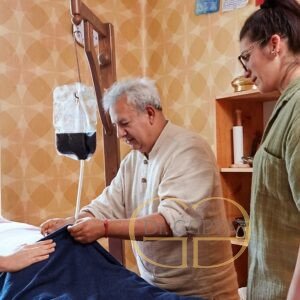 The Matra Basti process “prolongs healthy life” by enemas and takes place through the intestinal tract administration of medicines through rectum / anus with the help of an instrument, specially designed for this process. This process is also good for diseases characteristic of Vata dosha: constipation, milder rectal stenosis, sexual disorders, kidney stones, heart pain, vomiting, neck pain, sciatica, arthritis, rheumatism, gout and body acidity. The process is effective for people with diabetes and prostate gland. It helps in removal of gas that causes pain and also in removing toxins for purpose of body de-toxification (hemorrhoids). This benefits process: neurological ailments, paralysis, flatulence, lower backache, gout and rheumatism. The Snehavasti Basti decoction based enema helps in colonic de-toxification; gastric problems such as constipation and is indicated for management of neurological ailments such as paralysis. The Rajayapana Basti the medicated ghee or herbal oils are administered. Furthermore, enemas are also given as treatment for constipation if nothing works for the patient. Basti also feeds the colonic flora. It is one of the best treatments for treating abnormal Vata (lower back pain, gout, arthritis and chronic constipation). It benefits epilepsy, and also dysfunction of senses. Basti also enhances the immune system of the individual by cleansing the colon. Basti also nourishes the base Prana of the body which is formed in the colon of the body.
The Matra Basti process “prolongs healthy life” by enemas and takes place through the intestinal tract administration of medicines through rectum / anus with the help of an instrument, specially designed for this process. This process is also good for diseases characteristic of Vata dosha: constipation, milder rectal stenosis, sexual disorders, kidney stones, heart pain, vomiting, neck pain, sciatica, arthritis, rheumatism, gout and body acidity. The process is effective for people with diabetes and prostate gland. It helps in removal of gas that causes pain and also in removing toxins for purpose of body de-toxification (hemorrhoids). This benefits process: neurological ailments, paralysis, flatulence, lower backache, gout and rheumatism. The Snehavasti Basti decoction based enema helps in colonic de-toxification; gastric problems such as constipation and is indicated for management of neurological ailments such as paralysis. The Rajayapana Basti the medicated ghee or herbal oils are administered. Furthermore, enemas are also given as treatment for constipation if nothing works for the patient. Basti also feeds the colonic flora. It is one of the best treatments for treating abnormal Vata (lower back pain, gout, arthritis and chronic constipation). It benefits epilepsy, and also dysfunction of senses. Basti also enhances the immune system of the individual by cleansing the colon. Basti also nourishes the base Prana of the body which is formed in the colon of the body.
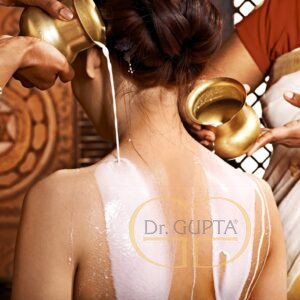 The Kashaya Dhara process wholw body is an Ayurvedic decoction bath, where a constant rhythmic stream of herbalised oil liquid is poured and massaged over the body maintaining a specific rhythm, height and temperature. A relaxing treatment, it is used to support weight loss or detoxification programs. Treats various inflammatory conditions, infectious diseases and removes Ama that is toxins from the body. Skin diseases like psoriasis, eczema, dermatitis, lecoderma and urticarial conditions. Sports injury and musculoskeletal disorders like fibromyalgia. This method the tissues and promotes metabolism, removes tension from the muscles and also good for pain and stiffness of the joints and muscles. The nourishes the skin and promotes longevity, and also rejuvenates the body (especially for sleeplessness, anxiety, nervousness and some neurological disorders). The Ksheeradhara is a form of Sarvangadhara in which milk is poured along with the herbal oil. During the post-therapy bath, green gram paste and herbal shampoo are used to wash away the oil. This process helps with problems with the head, digestive organs and musculoskeletal diseases, as well as joint diseases, paralysis (hemiplegia), rheumatic diseases, osteoarthritis, paraplegia, weakness and fear. The process nourishes the nervous tissues, enhances blood circulation and sexual ability; regenerates the whole body, improves lymph flow, immune and nervous systems and helps people suffering from asthma and tuberculosis.
The Kashaya Dhara process wholw body is an Ayurvedic decoction bath, where a constant rhythmic stream of herbalised oil liquid is poured and massaged over the body maintaining a specific rhythm, height and temperature. A relaxing treatment, it is used to support weight loss or detoxification programs. Treats various inflammatory conditions, infectious diseases and removes Ama that is toxins from the body. Skin diseases like psoriasis, eczema, dermatitis, lecoderma and urticarial conditions. Sports injury and musculoskeletal disorders like fibromyalgia. This method the tissues and promotes metabolism, removes tension from the muscles and also good for pain and stiffness of the joints and muscles. The nourishes the skin and promotes longevity, and also rejuvenates the body (especially for sleeplessness, anxiety, nervousness and some neurological disorders). The Ksheeradhara is a form of Sarvangadhara in which milk is poured along with the herbal oil. During the post-therapy bath, green gram paste and herbal shampoo are used to wash away the oil. This process helps with problems with the head, digestive organs and musculoskeletal diseases, as well as joint diseases, paralysis (hemiplegia), rheumatic diseases, osteoarthritis, paraplegia, weakness and fear. The process nourishes the nervous tissues, enhances blood circulation and sexual ability; regenerates the whole body, improves lymph flow, immune and nervous systems and helps people suffering from asthma and tuberculosis.
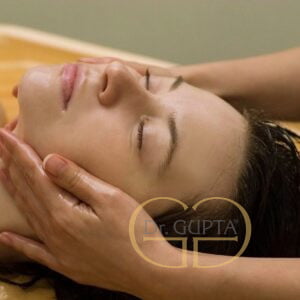 The Mukabhyanga or Shiroabhyangam process is performed, a head, neck and shoulder. Improves and rejuvenates the health of the central nervous system; Relieves pain, headaches, migraines, stress and insomnia; Relaxes muscles and reduces stiffness; Calms the mind and rejuvenates the body; Balances the pineal and pituitary glands. Mukhabhyanga helps with various neuralgias on the face; relieves tension and nervousness. Strengthens facial muscles and maintains tone, brings more oxygen to the face and improves the nutrition of its cells. Increases blood circulation and oxygen to the brain. Relieves fatigue and foggy thinking and is an anti-aging process and improves general well-being, especially in cases of anaemia. The Mukabhyanga or Shiroabhyangam is an ancient form of Ayurvedic head massage to achieve “eternal youth”! Prevents premature greying, hair fall, dandruff, and stimulates hair growth; Calms the Vata (prevent degenerative diseases); Calms the Pitta (prevent inflammatory diseases); Helpful in treating tinnitus, jaw aches, and sinusitis; Stimulates lymphatic drainage and aids sound sleep. Ayurvedic treatment for hair fall includes Diet, Meditation, Yoga and Local oil application with regular massage of the scalp.
The Mukabhyanga or Shiroabhyangam process is performed, a head, neck and shoulder. Improves and rejuvenates the health of the central nervous system; Relieves pain, headaches, migraines, stress and insomnia; Relaxes muscles and reduces stiffness; Calms the mind and rejuvenates the body; Balances the pineal and pituitary glands. Mukhabhyanga helps with various neuralgias on the face; relieves tension and nervousness. Strengthens facial muscles and maintains tone, brings more oxygen to the face and improves the nutrition of its cells. Increases blood circulation and oxygen to the brain. Relieves fatigue and foggy thinking and is an anti-aging process and improves general well-being, especially in cases of anaemia. The Mukabhyanga or Shiroabhyangam is an ancient form of Ayurvedic head massage to achieve “eternal youth”! Prevents premature greying, hair fall, dandruff, and stimulates hair growth; Calms the Vata (prevent degenerative diseases); Calms the Pitta (prevent inflammatory diseases); Helpful in treating tinnitus, jaw aches, and sinusitis; Stimulates lymphatic drainage and aids sound sleep. Ayurvedic treatment for hair fall includes Diet, Meditation, Yoga and Local oil application with regular massage of the scalp.
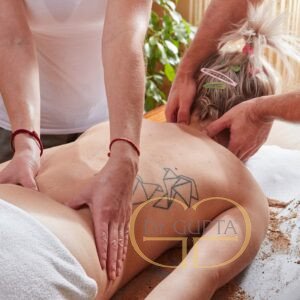 The Marma process is performed through 107 points (Nadis), subtle energies throughout the body that excite the circulatory and lymphatic systems. The whole process liberates and revives / refreshes the whole body, and at the same time restores the health of all three doshas. Marma points serve as a bridge between the physical body and the subtle energies. In Ayurvedic medicine, marma points are located in the house of the three pillars of life, known as the Three Doshas of Vata – Pitta – Kapha, and marmas are understood as intersections or encounters of five organic principles: ligaments, blood vessels, muscles, bones and connective tissue. The Mutta Kizhi in this treatment, boiled egg and herbal powders together are made into a bundle and are applied to the whole body along with hot medicated oils. This is indicated in Muscular atrophy, muscular weakness, stiff joints, joint pain and sports injuries. This process is very effective in facial paralysis and hemiplegia. This benefits process: It is better for the cervical spondylosis; Helps to prevent frozen shoulder, knee pain and Relieves joint pain.
The Marma process is performed through 107 points (Nadis), subtle energies throughout the body that excite the circulatory and lymphatic systems. The whole process liberates and revives / refreshes the whole body, and at the same time restores the health of all three doshas. Marma points serve as a bridge between the physical body and the subtle energies. In Ayurvedic medicine, marma points are located in the house of the three pillars of life, known as the Three Doshas of Vata – Pitta – Kapha, and marmas are understood as intersections or encounters of five organic principles: ligaments, blood vessels, muscles, bones and connective tissue. The Mutta Kizhi in this treatment, boiled egg and herbal powders together are made into a bundle and are applied to the whole body along with hot medicated oils. This is indicated in Muscular atrophy, muscular weakness, stiff joints, joint pain and sports injuries. This process is very effective in facial paralysis and hemiplegia. This benefits process: It is better for the cervical spondylosis; Helps to prevent frozen shoulder, knee pain and Relieves joint pain.
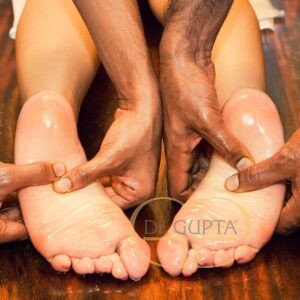 The “mother” of all therapies is known as Padabhyangam (foot therapy), because our feet connect our body with the earth. There are multiple health benefits of this therapy: Relieves stiffness, dryness, and numbness of the leg and foot; Offers sturdiness and stability to the foot and limbs; Promotes healthy eyesight and hearing senses; Prevents/cures sciatica through enhanced blood circulation and improved peripheral circulation; Prevents foot ailments and relieves contraction of muscles, ligaments, and vessels of the feet; Prevents cracks in the foot and leaves the feeling looking healthier and attractive; Reduces stress, calms the mind, and allows a rejuvenated mind and body; Relaxes and revitalizes the central nervous system; Removes fatigue from the lower limbs and improves the quality of sleep; Activates metabolism and cures headaches. Conditions that are holistically treated include: Hypertension, Hemiplegia and paraplegia, Insomnia, Depression, Epilepsy, Diabetic neuropathy, Anxiety, Sprains, cramps, and numbness of the feet and legs. The treatments often include use of Bowls made from bronze and tin to help eliminate toxins from the body. You can also receive a therapeutic process the bandage with splint or Upanaham is an herbal bandaging treatment used in Ayurveda to relieve localized pain, swelling and inflammation. In this treatment, a warm herbal paste is thickly applied over the affected area. The medical leaves herbal are placed over the paste and then bandaged with cotton cloth.
The “mother” of all therapies is known as Padabhyangam (foot therapy), because our feet connect our body with the earth. There are multiple health benefits of this therapy: Relieves stiffness, dryness, and numbness of the leg and foot; Offers sturdiness and stability to the foot and limbs; Promotes healthy eyesight and hearing senses; Prevents/cures sciatica through enhanced blood circulation and improved peripheral circulation; Prevents foot ailments and relieves contraction of muscles, ligaments, and vessels of the feet; Prevents cracks in the foot and leaves the feeling looking healthier and attractive; Reduces stress, calms the mind, and allows a rejuvenated mind and body; Relaxes and revitalizes the central nervous system; Removes fatigue from the lower limbs and improves the quality of sleep; Activates metabolism and cures headaches. Conditions that are holistically treated include: Hypertension, Hemiplegia and paraplegia, Insomnia, Depression, Epilepsy, Diabetic neuropathy, Anxiety, Sprains, cramps, and numbness of the feet and legs. The treatments often include use of Bowls made from bronze and tin to help eliminate toxins from the body. You can also receive a therapeutic process the bandage with splint or Upanaham is an herbal bandaging treatment used in Ayurveda to relieve localized pain, swelling and inflammation. In this treatment, a warm herbal paste is thickly applied over the affected area. The medical leaves herbal are placed over the paste and then bandaged with cotton cloth.
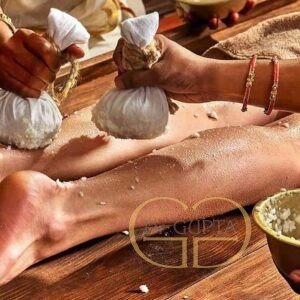
Ayurveda offers many remedies towards pain relief. Many treatments when effectively combined gives a long-standing relief from pain, stiffness, swelling and other complaints associated with sore joints bones, musculoskeletal and neuromuscular pains. They also rejuvenate, relax and strengthen the joints, muscles and soft tissues apart from providing pain relief. Pindasweda or Podi Kizhi is one of such treatment of highly effective process. In this, we use the herbal powders heated and fried in herbal oils tied in a bolus to rub against the painful parts for a fixed duration of time so as to heal pains and other related conditions, strengthen & rejuvenate joints, muscles and soft tissues. Patra Pindasweda (Ela Kizhi) is a form of Pottali Sweda which is included under the category of Pinda process (bolus fomentation). In this procedure we use heated or oil fried leaves of medicinal plants tied in a bolus to provide heat to the pain afflicted joints or body parts, especially in diseases like Osteoarthritis, Rheumatoid Arthritis, Lumbar spondylosis, Cervical spondylosis, Musculoskeletal pains, Myalgia etc. Shashtishali Pindasweda (Navara Kizhi) the treatment includes a full-body Abhyanga process with preparation of milk and rice to obtain maximum sweating. The use of various medicinal herbs in the mixture helps to detoxify the whole body naturally.
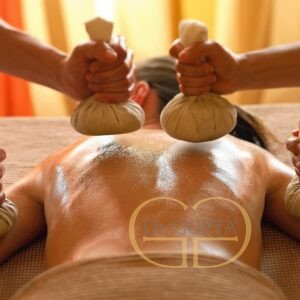 The Pindasweda (Naranga Kizhi) a bag filled with Jambeera (Lemon) mixed with herbal powders. This process are warmed with the help of medicated oils or without the oils which depend on the patient’s condition and then they are tied in a cloth in the form of a bolus. A good variety of Jambeera Lemon is selected and processed with other medicines which have the pharmacological and therapeutic property of relieving pain, inflammation, and stiffness and also which can rejuvenate and strengthen the joints and soft tissue. This therapy benefits’: stiffness in the joints, joint swelling, muscle stiffness, muscle cramps, pain in the joints, rheumatoid arthritis, muscular spasm, cervical spondylitis, lumbar spondylitis. The client was previously given the Abhyanga therapy process! The Mamsa Pindasweda (Mamsa Kizhi) is a specialized therapy which is performed for the diseases related to Bones, muscles and nerves and skin nourishment. The process or sudation therapy is given by using a bolus which is prepared by the material of goat / sheep / rabbit and processed with medicinal oil along with herbal medicines. This procedure is unique, which comprises both oleation, sudation, and nourishing therapy is a pre-requisite for Panchakarma. The benefits process: Improves Muscular strength; Rejuvenates the body tissue and the body cells; Stops degeneration of bones and joints; Nourishment of nerves; Improves blood circulation in the skin, and improves its colour and complexion.
The Pindasweda (Naranga Kizhi) a bag filled with Jambeera (Lemon) mixed with herbal powders. This process are warmed with the help of medicated oils or without the oils which depend on the patient’s condition and then they are tied in a cloth in the form of a bolus. A good variety of Jambeera Lemon is selected and processed with other medicines which have the pharmacological and therapeutic property of relieving pain, inflammation, and stiffness and also which can rejuvenate and strengthen the joints and soft tissue. This therapy benefits’: stiffness in the joints, joint swelling, muscle stiffness, muscle cramps, pain in the joints, rheumatoid arthritis, muscular spasm, cervical spondylitis, lumbar spondylitis. The client was previously given the Abhyanga therapy process! The Mamsa Pindasweda (Mamsa Kizhi) is a specialized therapy which is performed for the diseases related to Bones, muscles and nerves and skin nourishment. The process or sudation therapy is given by using a bolus which is prepared by the material of goat / sheep / rabbit and processed with medicinal oil along with herbal medicines. This procedure is unique, which comprises both oleation, sudation, and nourishing therapy is a pre-requisite for Panchakarma. The benefits process: Improves Muscular strength; Rejuvenates the body tissue and the body cells; Stops degeneration of bones and joints; Nourishment of nerves; Improves blood circulation in the skin, and improves its colour and complexion.
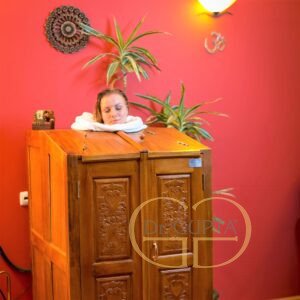 The Swedana is a steam sauna or Herbal bath (Bashpasweda), is a stimulating process for cleansing the lymphatic ducts, improving circulation, digestion, sleep, the nervous system, arthritis and excessive sweating. Special medicinal herbs stimulate the flow of oxygen throughout the body, while steam activates the natural process of sweating, significant for the release of accumulated toxins. The process helps to restore the natural state of balance of all three Doshas. The process itself gives a person a stable state of mind. The process starts at after a whole body massage with ayurvedic oils, the client is seated in a chamber made of medicinal wood, with his head exposed. Herbal steam is passed into the chamber till the client’s forehead show sweating. Herbal steam bath is used for relaxation purpose (as it provides lightness to the body and relieves muscle aches) and also for therapeutic purpose (as a preparatory procedure prior to Panchakarma therapy). In this therapy, the entire body is given a medicated steam bath by making the patient sit inside a steam chamber until there is sweating. This procedure is useful in detoxifying the body and reducing weight reduction. It also loosens the joints and induces feelings of lightness and invigoration.
The Swedana is a steam sauna or Herbal bath (Bashpasweda), is a stimulating process for cleansing the lymphatic ducts, improving circulation, digestion, sleep, the nervous system, arthritis and excessive sweating. Special medicinal herbs stimulate the flow of oxygen throughout the body, while steam activates the natural process of sweating, significant for the release of accumulated toxins. The process helps to restore the natural state of balance of all three Doshas. The process itself gives a person a stable state of mind. The process starts at after a whole body massage with ayurvedic oils, the client is seated in a chamber made of medicinal wood, with his head exposed. Herbal steam is passed into the chamber till the client’s forehead show sweating. Herbal steam bath is used for relaxation purpose (as it provides lightness to the body and relieves muscle aches) and also for therapeutic purpose (as a preparatory procedure prior to Panchakarma therapy). In this therapy, the entire body is given a medicated steam bath by making the patient sit inside a steam chamber until there is sweating. This procedure is useful in detoxifying the body and reducing weight reduction. It also loosens the joints and induces feelings of lightness and invigoration.
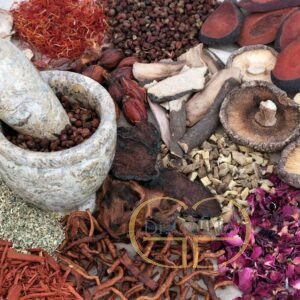 The Patra Pottali Sweda is one in all the unique most effective types of Swedana frequently used for pain relief. In this treatment specific herbal leaves are used for the application of direct heat and thereby inducing perspiration any part of the body for healing. This process instead of rice fresh Herbal Leaves are used for making Pind. Medicated oil is added to this mixture. With continuous stirring, the lea2ves are then fried to make it plain. Before the process, a short Abhyanga massage is performed, and finally the cleaning using gram flour full body. This process helps in rectifying the morbid Kapha dosha and is very much efficacious in clinical conditions where vitiation of Vata dosha is the predominant like Arthritis. The benefits process: Lightness of the body; Reduction of the pain & the stiffness; Better mobility of the Joint; Effective in disorders due to degeneration of bone; Effectively relieves pain in tendinitis; Useful in the treatment of muscle pull as well as strain; Cures low backache; Effective in the treatment of peripheral neuritis. Effective in the treatment Gout, Paralysis, Spondylitis and Varicose veins. The Vamana (vomiting) process which is very effective for anyone who has chronic bronchitis, cough, asthma, weakness, poor appetite, anaemia, diabetes, lymphatic obstruction, edema, epilepsy, sinus problems and chronic angina. In cases like migraine, cough, dyspnea, diabetes, indigestion, anemia, and respiratory disorders, Vamana can be administered.
The Patra Pottali Sweda is one in all the unique most effective types of Swedana frequently used for pain relief. In this treatment specific herbal leaves are used for the application of direct heat and thereby inducing perspiration any part of the body for healing. This process instead of rice fresh Herbal Leaves are used for making Pind. Medicated oil is added to this mixture. With continuous stirring, the lea2ves are then fried to make it plain. Before the process, a short Abhyanga massage is performed, and finally the cleaning using gram flour full body. This process helps in rectifying the morbid Kapha dosha and is very much efficacious in clinical conditions where vitiation of Vata dosha is the predominant like Arthritis. The benefits process: Lightness of the body; Reduction of the pain & the stiffness; Better mobility of the Joint; Effective in disorders due to degeneration of bone; Effectively relieves pain in tendinitis; Useful in the treatment of muscle pull as well as strain; Cures low backache; Effective in the treatment of peripheral neuritis. Effective in the treatment Gout, Paralysis, Spondylitis and Varicose veins. The Vamana (vomiting) process which is very effective for anyone who has chronic bronchitis, cough, asthma, weakness, poor appetite, anaemia, diabetes, lymphatic obstruction, edema, epilepsy, sinus problems and chronic angina. In cases like migraine, cough, dyspnea, diabetes, indigestion, anemia, and respiratory disorders, Vamana can be administered.
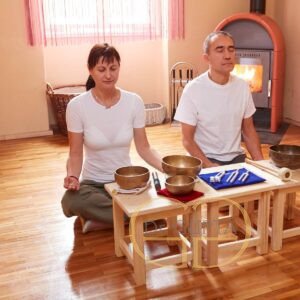
The Nasya Karma / Nasyam process is an Ayurvedic therapy that involves administering medications and herbal extracts through the nasal cavity to treat different complications affecting the region above the shoulder. It is an essential part of the five detoxification therapies in Ayurveda called the Panchakarma treatment. This treatment can work wonders to control migraine headaches, sinusitis, congestions in breathing, infections, and various other problems. As they effectively reach the nervous system through nerve endings in the nasal cavity, they have a calming effect on the nerves; they reduce stress and anxiety, and promote restful sleep. Moreover, therapy is also known to slow down the aging process and early greying of hair. It aids in relieving congestion, allergies, sinusitis, and other respiratory disorders. The Sodhana & Pranayama is a process that involves breathing exercises (the procedure involves ingesting drops through the nose and ears, to clear the ducts and calm the nervous system); it has a beneficial effect on the work of the brain for the purpose of cleansing the energy channels (Nadisodhana) which has a beneficial effect on the body, mind and spirit. The process is good for people who have “a lot of work and are under pressure” and are in daily contact with fear, stress, or are emotionally unstable and have trouble sleeping.
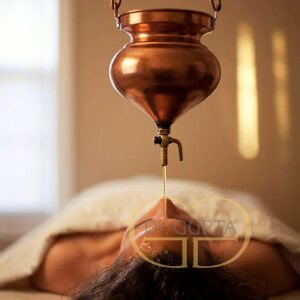 The Shirodhara in traditional medicine is of paramount importance for the treatment of numerous problems with the head, neck, eyes, ears, nose, throat and nervous system. This process a certain medicinal liquid is directed to the area of sensory experience, in the middle of the forehead, between the eyebrows, in a constant thin stream: Tailadhara, medical oils with the addition of medicinal herbs or organic essential oils; Takradhara, whey buttermilk infused with medicinal herbs; Ksheerdhara, milk infused with medicinal herbs; Kwathdhara, herbal teas with the addition of organic essential oils; Jaladhara, coconut water or plain water infused with medicinal herbs. The effects are determined by the coherence of brain waves, alpha waves and the regulation of sympathetic outflow through the centre of the frontal connection with the pineal gland. The effect is similar to meditation, which results from the calmness of the mind that leads to an adaptive response to basal stress and stabilizes the mind. It is a form of restorative therapy for stress, anxiety, depression and all other psychosomatic illnesses. Shirodhara has therapeutic potential in Alzheimer’s and Parkinson’s diseases, epilepsy, migraines and anaemia. Before the Shirodhara process, the Mukabhyanga process is performed on the head improves blood circulation and allows the healing fluid to flow deep into the scalp.
The Shirodhara in traditional medicine is of paramount importance for the treatment of numerous problems with the head, neck, eyes, ears, nose, throat and nervous system. This process a certain medicinal liquid is directed to the area of sensory experience, in the middle of the forehead, between the eyebrows, in a constant thin stream: Tailadhara, medical oils with the addition of medicinal herbs or organic essential oils; Takradhara, whey buttermilk infused with medicinal herbs; Ksheerdhara, milk infused with medicinal herbs; Kwathdhara, herbal teas with the addition of organic essential oils; Jaladhara, coconut water or plain water infused with medicinal herbs. The effects are determined by the coherence of brain waves, alpha waves and the regulation of sympathetic outflow through the centre of the frontal connection with the pineal gland. The effect is similar to meditation, which results from the calmness of the mind that leads to an adaptive response to basal stress and stabilizes the mind. It is a form of restorative therapy for stress, anxiety, depression and all other psychosomatic illnesses. Shirodhara has therapeutic potential in Alzheimer’s and Parkinson’s diseases, epilepsy, migraines and anaemia. Before the Shirodhara process, the Mukabhyanga process is performed on the head improves blood circulation and allows the healing fluid to flow deep into the scalp.
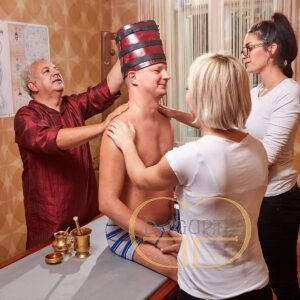 The Shirovasti process is the process of lubricating the head, that is, putting oil on the head using a leather cap (bag) of a tubular shape. It is performed, explicitly, as part of the Panchakarma program, after been cleansed by the process of Virechana. Shirovasti is used to treat the following difficulties: Facial paralysis; Insomnia; Dry mouth and nose; Cataracts (a grey film on the eyeball); Migraines and other headaches. The Shiro Pichu is treatment procedure which includes keeping a sterile cotton pad dipped in medicated oils on the crown of the head and wrapping it up with a bandage cloth. This benefits therapy of hair fall, headache, migraine, PTSD etc. This process advised for prevention and getting rid of many psychosomatic illnesses. Since it can be done on a daily basis by those who have weak nerves, it is also a preventive measure. Prevention of diseases pertaining to body, mind and sense organs is the first indication of Shiro Pichu. The process is used to treat many diseases occurring due to Shiro Abhihata or damage to the head or its components either from the outside or due to morbid Doshas from within: Stiffness of neck, nape (Cervical spondylosis, torticollis); Facial paralysis; Bell’s Palsy; Deviation of eye and squint; Loss of consciousness; Cramps; Loss of activities energy; Cough; Lock jaw; Stammering of speech; Difficulty in opening the eyes; Pulsating sensation or pulsations or twitching in the cheeks; Yawning; Salivation; Loss of voice and Crookedness of the face etc.
The Shirovasti process is the process of lubricating the head, that is, putting oil on the head using a leather cap (bag) of a tubular shape. It is performed, explicitly, as part of the Panchakarma program, after been cleansed by the process of Virechana. Shirovasti is used to treat the following difficulties: Facial paralysis; Insomnia; Dry mouth and nose; Cataracts (a grey film on the eyeball); Migraines and other headaches. The Shiro Pichu is treatment procedure which includes keeping a sterile cotton pad dipped in medicated oils on the crown of the head and wrapping it up with a bandage cloth. This benefits therapy of hair fall, headache, migraine, PTSD etc. This process advised for prevention and getting rid of many psychosomatic illnesses. Since it can be done on a daily basis by those who have weak nerves, it is also a preventive measure. Prevention of diseases pertaining to body, mind and sense organs is the first indication of Shiro Pichu. The process is used to treat many diseases occurring due to Shiro Abhihata or damage to the head or its components either from the outside or due to morbid Doshas from within: Stiffness of neck, nape (Cervical spondylosis, torticollis); Facial paralysis; Bell’s Palsy; Deviation of eye and squint; Loss of consciousness; Cramps; Loss of activities energy; Cough; Lock jaw; Stammering of speech; Difficulty in opening the eyes; Pulsating sensation or pulsations or twitching in the cheeks; Yawning; Salivation; Loss of voice and Crookedness of the face etc.
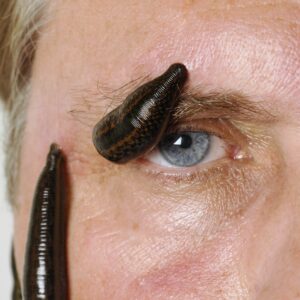 The Raktamokshana of Leech Therapy to suck the impure blood locally from a body part is called as Jalaukavacharan in Ayurved (blood-letting technique). The area is cleaned and leech applied, after specific time the leech gets detached and wound is compressed. This benefits process it helps to let impure blood and remove toxins within. It helps to reduce inflammation and pain at the site. It helps to improve the micro-circulation of the affected site and helps in healing the affected part. Recommended in: skin diseases, acne, abscess, diabetic foot etc. Since the time of ancient Egypt, leeches have been used in medicine to treat nervous system abnormalities, dental problems, skin diseases, and infections. Today, they’re mostly used in plastic surgery and other microsurgery. This is because leeches secrete peptides and proteins that work to prevent blood clots. The Raktamokshana is a treatment that has been used for a long time in the traditional medical system and is an integral treatment in the Panchakarma. Raktamokshana is applied in different ways, depending on the condition of the body and individually in patients associated with cancer, cysts, tumours; in herpes, abscesses, ulcers and goitre, and is effective on many skin diseases such as urticaria, rash, dermatitis, itching and leucoderma. The process itself refreshes the blood and balances all Three Doshas. It is effective against purulent inflammation, acne, gout, hemochromatosis, and enlargement of the liver and spleen.
The Raktamokshana of Leech Therapy to suck the impure blood locally from a body part is called as Jalaukavacharan in Ayurved (blood-letting technique). The area is cleaned and leech applied, after specific time the leech gets detached and wound is compressed. This benefits process it helps to let impure blood and remove toxins within. It helps to reduce inflammation and pain at the site. It helps to improve the micro-circulation of the affected site and helps in healing the affected part. Recommended in: skin diseases, acne, abscess, diabetic foot etc. Since the time of ancient Egypt, leeches have been used in medicine to treat nervous system abnormalities, dental problems, skin diseases, and infections. Today, they’re mostly used in plastic surgery and other microsurgery. This is because leeches secrete peptides and proteins that work to prevent blood clots. The Raktamokshana is a treatment that has been used for a long time in the traditional medical system and is an integral treatment in the Panchakarma. Raktamokshana is applied in different ways, depending on the condition of the body and individually in patients associated with cancer, cysts, tumours; in herpes, abscesses, ulcers and goitre, and is effective on many skin diseases such as urticaria, rash, dermatitis, itching and leucoderma. The process itself refreshes the blood and balances all Three Doshas. It is effective against purulent inflammation, acne, gout, hemochromatosis, and enlargement of the liver and spleen.
 The Udwarthanam is a rubbing massage process with either medicinal oil or a churna (dried finely pulverized herbal powder) is a popular Ayurvedic deep tissue massage & weight loss therapy. This process is especially loved by women as this massage helps in breaking down subcutaneous fat storage. Although a very refreshing and rejuvenating massage for the whole body, cellulite reduction and weight loss are the main aim of this treatment. While the massage with oils cures many of nervous disorders, the churna massage is effective in treating obesity, rheumatoid and arthritis. Once the procedure is approx. 30 min. followed by a warm water bath. Treatment stimulates the nervous system, soothes the nerve endings and improves blood circulation. Hence, it is used in the treatment of sciatica, muscle stiffness, paralysis, sclerosis, obesity, and skin-related disorders. It regenerates the skin cells and restores the natural elasticity of the skin. The process coupled with herbal Swedana steam therapy afterwards can help to reduce the cellulite as well as the subcutaneous fats accumulated over the body (bringing down the Kapha toxins – it helps to prevent cholesterol-related issues and eliminates bad body odor). It can be used to cure edema, a condition characterized by the presence of excessive watery fluid in the cavities the body. The therapy has also been known to treat diseases like hemiplegia, rheumatoid arthritis, muscular dystrophy, Parkinson’s disease, motor neuron disorders, etc.
The Udwarthanam is a rubbing massage process with either medicinal oil or a churna (dried finely pulverized herbal powder) is a popular Ayurvedic deep tissue massage & weight loss therapy. This process is especially loved by women as this massage helps in breaking down subcutaneous fat storage. Although a very refreshing and rejuvenating massage for the whole body, cellulite reduction and weight loss are the main aim of this treatment. While the massage with oils cures many of nervous disorders, the churna massage is effective in treating obesity, rheumatoid and arthritis. Once the procedure is approx. 30 min. followed by a warm water bath. Treatment stimulates the nervous system, soothes the nerve endings and improves blood circulation. Hence, it is used in the treatment of sciatica, muscle stiffness, paralysis, sclerosis, obesity, and skin-related disorders. It regenerates the skin cells and restores the natural elasticity of the skin. The process coupled with herbal Swedana steam therapy afterwards can help to reduce the cellulite as well as the subcutaneous fats accumulated over the body (bringing down the Kapha toxins – it helps to prevent cholesterol-related issues and eliminates bad body odor). It can be used to cure edema, a condition characterized by the presence of excessive watery fluid in the cavities the body. The therapy has also been known to treat diseases like hemiplegia, rheumatoid arthritis, muscular dystrophy, Parkinson’s disease, motor neuron disorders, etc.
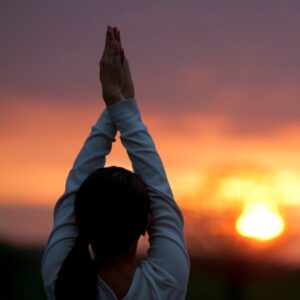 The Vyayaama & Yoga is intended for people who need physical activity (due to obesity, digestive problems, diabetes…). The processes are particularly successful in conserving heart and lung energy. The processes themselves require physical condition and thus man discovers-receives powerful energy through the very essence of existence (receiving knowledge of the projection of energy from space, which circulates in the body and beyond). Physical exercises – Asanas, as well as various breathing techniques – Pranayama as well as meditation exercises, lead to the improvement of physical and spiritual health. The Yoni Prakshalanam for therapy the female genitalia wich usually faces numerous problems like inflammation, itching, less muscular strength and much more. “Yoni” is the term for the female genitalia and “Prakshalanam” means washing. So the name itself gives an overview of the treatment technique includes washing the female genital area with healing medicated oils and liquids. This process has proven to be effective to be really helpful for the vaginal area. It helps to cure numerous infections, but also helps in relaxing those private parts. It is a well-known fact that the sensitive reproductive organ of females has to go through a lot of stress owing to periods, childbirth, ageing etc. The various erosions caused by physical ageing are slowed down. This is great tretman for infertile women who have tried to conceive a lot of times, but haven’t been able to.
The Vyayaama & Yoga is intended for people who need physical activity (due to obesity, digestive problems, diabetes…). The processes are particularly successful in conserving heart and lung energy. The processes themselves require physical condition and thus man discovers-receives powerful energy through the very essence of existence (receiving knowledge of the projection of energy from space, which circulates in the body and beyond). Physical exercises – Asanas, as well as various breathing techniques – Pranayama as well as meditation exercises, lead to the improvement of physical and spiritual health. The Yoni Prakshalanam for therapy the female genitalia wich usually faces numerous problems like inflammation, itching, less muscular strength and much more. “Yoni” is the term for the female genitalia and “Prakshalanam” means washing. So the name itself gives an overview of the treatment technique includes washing the female genital area with healing medicated oils and liquids. This process has proven to be effective to be really helpful for the vaginal area. It helps to cure numerous infections, but also helps in relaxing those private parts. It is a well-known fact that the sensitive reproductive organ of females has to go through a lot of stress owing to periods, childbirth, ageing etc. The various erosions caused by physical ageing are slowed down. This is great tretman for infertile women who have tried to conceive a lot of times, but haven’t been able to.
